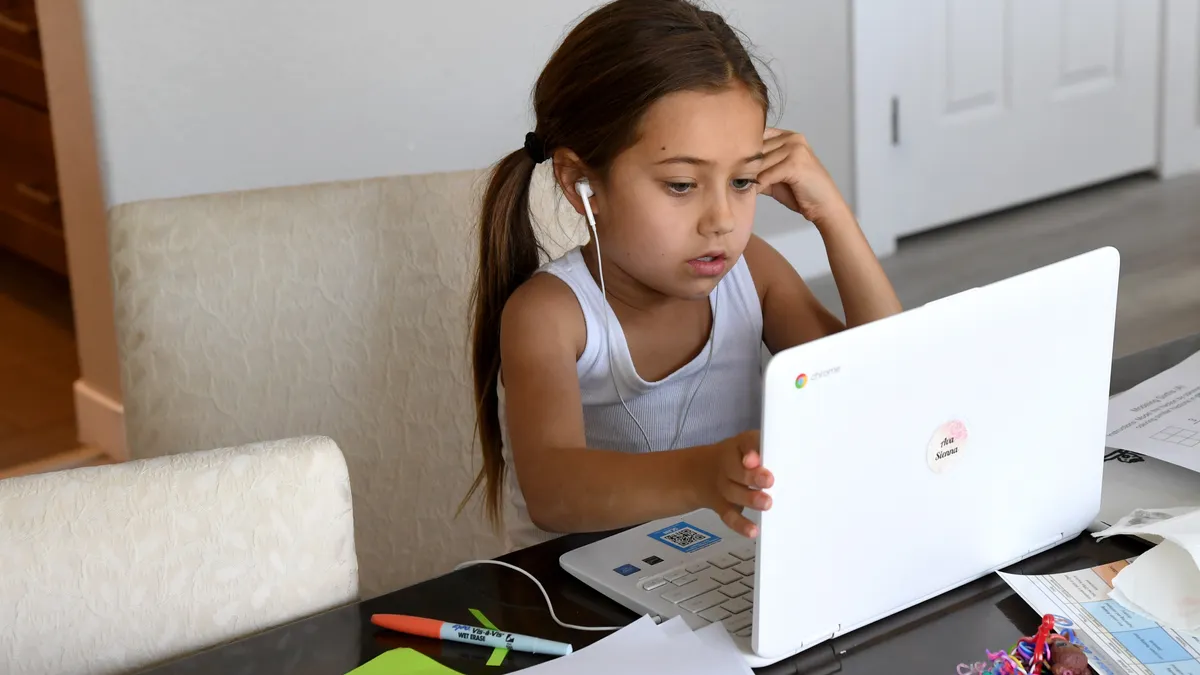Dive Brief:
- Los Angeles Unified School District, the second largest school system in the U.S., this week announced a $50 million effort to pay for high-speed internet service at no cost to families for one year to address the district’s digital divide. There are no income restrictions or other requirements to qualify, the district said.
- Up to $48 million in funding for the program is allocated through the Federal Communications Commission’s Emergency Connectivity Fund, although the exact amount spent on connectivity will depend on how many students can be supported, said Elvia Perez Cano, an LAUSD public information officer, in an email.
- Additionally, LAUSD Superintendent Alberto Carvalho said during a press conference Tuesday the district would supply up to 100,000 devices to put in students’ hands over the next one and a half years through a separate initiative. Carvalho said he is “optimistic” about future federal funding opportunities to continue efforts to close the digital divide.
Dive Insight:
LAUSD’s announcement is a historic and exciting move in the effort to address the gap in student internet access, said Keith Krueger, CEO of the Consortium for School Networking, an association for school technology leaders.
That gap has only been highlighted by the COVID-19 pandemic, Carvalho said during the press conference.
“I’m one who believes connectivity and universal, ubiquitous access to digital content anytime, anywhere — whether in school, in the community, in the park or the public library — is a civil right that must be delivered to our generation,” Carvalho said.
A 2021 statewide study by The University of Southern California and the California Emerging Technology Fund found 70% of households earning less than $20,000 have an internet connection, compared to 92% of households earning between $20,000 and $39,999, 97% between $40,000 and $59,999, and 99% above $60,000.
“Those who are disconnected today will be economically disadvantaged tomorrow,” Carvalho said.
The superintendent added that the LAUSD announcement is just the first year of this investment. He said his goal is to demonstrate the power of the connectivity program as district leaders pursue legislation and federal funding opportunities to ensure all students are connected to broadband.
The third and likely final round of funding applications for the FCC’s Emergency Connectivity Fund opened in April. School and library applicants have already requested $6.427 billion out of the total $7.17 billion program to pay for devices and internet connections.
It can be tricky to rely on emergency and potentially short-term federal funding to pay for monthly internet connections because the money will eventually run out, Krueger said. He said Carvalho is a “brave leader” to step up and lean in using federal funding without knowing what will happen the following year.
Even so, “it’s enormously important” that LAUSD is making this investment to address the district’s digital divide, Krueger said, and it can serve as a model for other school leaders. This action shows LAUSD is no longer going to wait for the problem to be solved on its own, he added.
“Every superintendent should be looking at what they can be doing to solve the homework gap in their backyard,” Krueger said.











